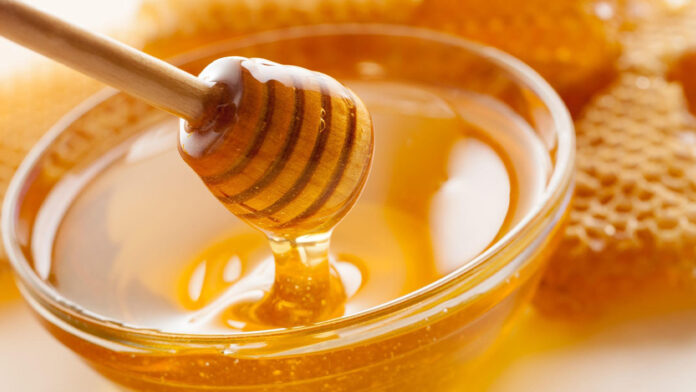Step into the world of golden sweetness as we explore the incredible phenomenon of honey that never spoils. In this article, we unveil 20 astonishing facts about the timeless nature of honey, its unique properties, and the enduring significance of this golden nectar throughout human history.
Eternal Preservation
One of the most captivating facts about honey is its eternal preservation. Archaeologists have discovered pots of honey in ancient Egyptian tombs that are over 3,000 years old and still perfectly edible. The natural composition of honey lends itself to unparalleled preservation.
Low Water Content
The secret to honey’s longevity lies in its low water content. With a moisture level of around 18%, honey creates an environment that is inhospitable to bacteria and microorganisms, preventing spoilage.
Acidic pH
Honey’s slightly acidic pH, ranging between 3.2 and 4.5, further inhibits the growth of bacteria and fungi. This acidic environment acts as a natural preservative, contributing to the perpetual freshness of honey.
Hydrogen Peroxide Production
Bees add an enzyme called glucose oxidase to honey during the production process. This enzyme, when combined with the glucose and oxygen in honey, produces small amounts of hydrogen peroxide, which has antimicrobial properties.
Antibacterial Properties
Honey contains natural antibacterial compounds, such as hydrogen peroxide and bee-derived peptides. These compounds contribute to honey’s ability to inhibit the growth of bacteria, making it an effective natural preservative.
Crystallization Process
Over time, honey may undergo crystallization, changing from a liquid to a more solid state. This process does not indicate spoilage but rather showcases the natural sugars in honey. Gentle warming can reverse crystallization, restoring honey to its liquid form.
Varied Floral Sources
The flavor and composition of honey can vary based on the floral sources visited by bees. Different types of honey, such as clover, lavender, or manuka, share the timeless preservation qualities that make them a perennial culinary delight.
Culinary and Medicinal Uses
Honey’s enduring freshness has made it a versatile ingredient in both culinary and medicinal applications. From sweetening dishes to serving as a natural remedy for various ailments, honey has been cherished for its multifaceted benefits.
Symbolic Significance
Throughout history, honey has held symbolic significance in various cultures. Revered for its natural sweetness and enduring nature, honey has been associated with themes of longevity, immortality, and prosperity.
Modern-Day Rediscovery
In the modern era, honey’s timelessness has been rediscovered, leading to a renewed appreciation for this ancient food. Its use as a natural sweetener, skincare ingredient, and holistic remedy continues to thrive, connecting us to the wisdom of centuries past.
Immune-Boosting Properties
Honey’s antimicrobial and antioxidant properties contribute to its potential immune-boosting effects. Some types of honey, such as manuka honey, are particularly renowned for their potent antibacterial qualities.
Healing Wounds and Burns
Throughout history, honey has been used topically for wound healing and treating burns. Its natural antiseptic properties, coupled with its ability to maintain a moist environment, can aid in the healing process and reduce the risk of infection.
Cultural and Ritual Significance
Honey has played a significant role in cultural and ritual practices worldwide. From ancient rituals to modern ceremonies, the symbolism of honey as a representation of sweetness, abundance, and preservation continues to be revered.
Natural Energy Source
The natural sugars present in honey—primarily fructose and glucose—make it a quick and efficient energy source. Many athletes and outdoor enthusiasts turn to honey as a natural and easily digestible energy booster.
Honey Varietal Tasting
Just like wine, honey exhibits a range of flavors, aromas, and textures influenced by the flowers visited by bees. Participating in honey varietal tastings allows enthusiasts to explore the nuances of different types of honey, enhancing the appreciation of this timeless delicacy.
Hygroscopic Nature
Honey is hygroscopic, meaning it attracts and retains moisture from the environment. This quality contributes to its longevity by reducing the water content in its surroundings, creating an inhospitable environment for spoilage-causing microorganisms.
Harvesting Techniques
Sustainable and ethical beekeeping practices are crucial for maintaining the quality and purity of honey. Responsible harvesting techniques ensure the well-being of bee colonies and contribute to the production of high-quality honey with enduring freshness.
Antioxidant-Rich Composition
Honey contains a variety of antioxidants, including flavonoids and polyphenols, which can help combat oxidative stress in the body. These antioxidants contribute to the overall health benefits of honey.
Hygiene in the Hive
Bees play a vital role in maintaining the hygiene of the hive. They produce enzymes that convert nectar into honey and also use propolis—a resinous substance from tree buds—to seal and sterilize the hive, further ensuring the purity of honey.
Artisanal Honey Production
The rise of artisanal honey production has led to a diverse array of honey products, each showcasing the unique flavors and characteristics of the region and flora. Artisanal beekeepers contribute to the preservation of honey’s timeless appeal.
In conclusion, the perpetual sweetness of honey is not just a culinary marvel but a testament to nature’s ingenious design. These 10 astonishing facts offer a glimpse into the timeless allure of honey, inviting us to savor its golden nectar and appreciate its enduring significance throughout the ages.

